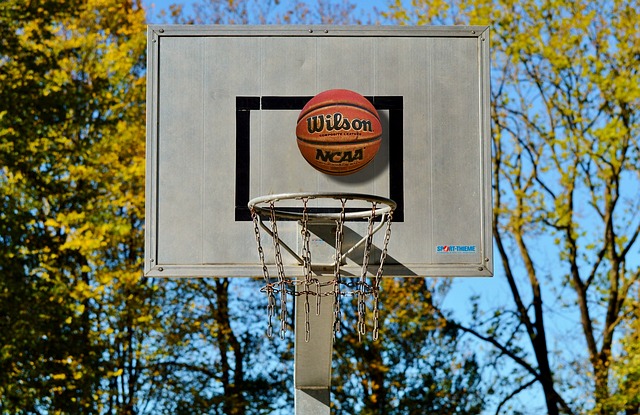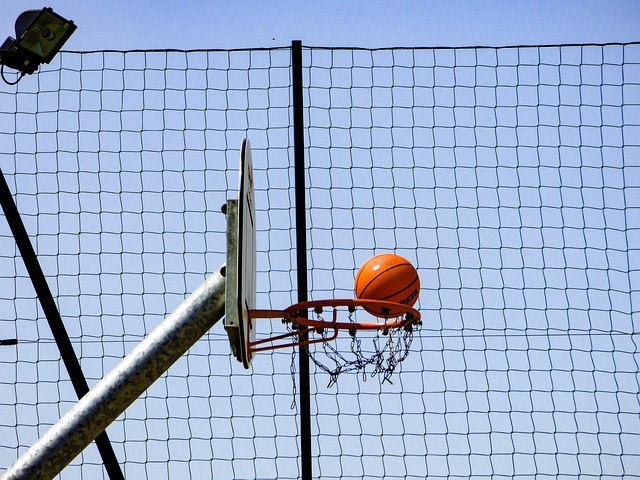Basketball is a fast-paced, high-intensity sport that requires agility, speed, and strength. But with all the sudden movements, explosive jumps, and quick direction changes, it’s no surprise that injuries are a common concern. Whether you’re a seasoned pro or a weekend warrior, avoiding injuries is crucial to maintaining your performance and staying on the court.
In this article, we’ll explore key basketball injury prevention strategies that can help you avoid common injuries, stay fit, and continue playing at your best. From stretching and warm-up routines to the importance of proper footwear and joint strength, we’ll break down everything you need to know to stay injury-free on the court.
The Reality of Injuries in Basketball
If you’ve been playing basketball for any amount of time, you’ve probably experienced your fair share of bumps and bruises. Sprained ankles, knee tweaks, muscle strains—these are all part of the game. The dynamic nature of basketball—quick pivots, high-impact landings, and aggressive ball-handling—puts significant stress on your body. And with that stress comes the risk of injury.
In fact, studies show that basketball players are more likely to suffer from lower extremity injuries such as ankle sprains, knee injuries, and muscle strains. These injuries can range from mild sprains to more severe issues like torn ligaments, and they can sideline you for days, weeks, or even months if not properly managed.
The good news is that many of these injuries can be prevented with the right precautions, proper training, and smart recovery habits. Let’s dive into some essential tips for keeping yourself injury-free and playing your best game.
1. Stretching and Flexibility Exercises for Basketball Players
Before you hit the court, make sure your body is primed and ready to go. Stretching is key to maintaining flexibility and preventing injuries. It’s especially important for basketball players, as the sport demands quick changes in direction, explosive jumps, and sustained movement over long periods.
Dynamic Stretching Before Games
Unlike static stretching (where you hold a stretch for a period of time), dynamic stretching involves movement that helps warm up your muscles and increase blood flow. For basketball, dynamic stretching helps improve your range of motion and prepares your body for the high-intensity movements of the game.
Some great dynamic stretches include:
- Leg swings: Swing your legs forward and backward to loosen up your hips and hamstrings.
- Lunges with a twist: Step forward into a lunge, and twist your torso towards the front leg. This engages your core and stretches your hip flexors.
- Arm circles: Perform large and small arm circles to warm up your shoulders for shooting and passing.
- Butt kicks: While jogging in place, kick your heels toward your glutes to stretch your quads and improve mobility in your knees.
These exercises help improve muscle elasticity and increase your range of motion, which are crucial for avoiding injuries like muscle strains or joint stiffness.
Static Stretching After the Game
After the game, your muscles are warm, which makes it the perfect time to do some static stretching to cool down and improve flexibility. Focus on your calves, hamstrings, quadriceps, hips, and lower back. Hold each stretch for 20-30 seconds without bouncing.
Stretching for Flexibility
Maintaining flexibility throughout your career is essential. Over time, tight muscles can lead to injuries, and that’s where flexibility exercises for athletes come in handy. A great way to improve flexibility is through yoga or foam rolling, both of which can be incorporated into your recovery routine.

2. Pregame Warm-Up Routines
A good pregame warm-up routine is critical to prevent injuries and optimize performance. A warm-up prepares your muscles, joints, and cardiovascular system for the physical demands of the game. It should gradually increase your heart rate, improve blood flow to muscles, and enhance flexibility.
A typical pregame routine might include:
- 5-10 minutes of light cardio: Jogging, cycling, or even a brisk walk can get your heart rate up and blood circulating.
- Dynamic stretches (as mentioned above) to improve mobility.
- Sport-specific drills: Practice dribbling, shooting, and passing to mimic game conditions.
- Footwork drills: Do some quick footwork exercises to improve agility and readiness for fast cuts.
It’s important to give yourself enough time before the game to warm up properly—don’t rush through it! This will help you avoid pulling a muscle or straining a joint early in the game.
3. Proper Footwear: A Game-Changer
One of the most overlooked aspects of injury prevention in basketball is wearing the right footwear. Your shoes are your first line of defense against injuries like ankle sprains or foot stress fractures. Basketball shoes are designed to provide the support, stability, and traction you need for quick movements on the court.
When choosing basketball shoes, make sure to:
- Look for shoes with ankle support: High-top shoes are ideal for preventing ankle sprains because they provide extra support around the ankle area.
- Ensure a good fit: Shoes that are too tight or too loose can lead to blisters, discomfort, or improper foot mechanics.
- Focus on traction: The right soles will provide a good grip on the court, reducing the chances of slipping and falling during a fast break or jump shot.
If you’re not sure which shoes are best for your feet, consider visiting a sports store that specializes in basketball gear and get fitted properly.
4. Knee and Ankle Injury Prevention
Knee and ankle injuries are two of the most common injuries in basketball, given the sport’s emphasis on jumping, quick direction changes, and high-impact landings. But with a few preventative measures, you can reduce your risk of injury in these areas.
Knee Injury Prevention
To protect your knees, focus on strengthening the muscles around them. Strong quadriceps, hamstrings, and calves help take pressure off your knees during jumps and landings. Here are a few exercises that can help:
- Leg presses: Strengthens your quads and hamstrings, giving your knees extra support.
- Lunges: These target multiple muscles in your legs and improve knee stability.
- Squats: Strengthening the muscles of the lower body can prevent injuries to the knees by improving overall leg strength.
Ankle Injury Prevention
Ankle sprains are common in basketball because of the sudden lateral movements and jumps. To prevent ankle injuries:
- Strengthen your ankles: Use resistance bands or weights to strengthen the muscles around your ankles. Exercises like toe raises and heel-toe walking can help improve ankle stability.
- Wear ankle braces: If you have a history of ankle sprains, wearing an ankle brace during games can provide additional support.
- Practice balance: Exercises like standing on one leg or using a balance board can improve your proprioception and reduce the risk of rolling your ankle.
5. Injury Rehabilitation Exercises
Sometimes, despite our best efforts, injuries happen. When they do, it’s important to rehab properly so you can return to the court as soon as possible without making things worse.
If you suffer a mild injury, such as a sprained ankle or a pulled muscle, start with the R.I.C.E. method (Rest, Ice, Compression, Elevation) to manage swelling and pain. Once the acute pain subsides, focus on rehabilitation exercises to restore mobility and strength to the affected area.
For example, if you’re recovering from a sprained ankle, gentle range-of-motion exercises (like drawing the alphabet with your foot) and strengthening exercises (like ankle circles) can help you regain movement and stability.
It’s important to take your time during rehab—rushing back to the court too soon can lead to further injury. Listen to your body, and seek advice from a trainer or physical therapist if you’re unsure about your recovery.
6. Strengthening Joints for Injury Prevention
Building strength in the muscles around your joints is a critical step in injury prevention. Strengthened muscles act as a buffer, absorbing shock and reducing strain on the joints during high-impact movements like jumping and landing.
Some good strengthening exercises include:
- Leg extensions and leg curls to strengthen the muscles around your knees.
- Calf raises and toe raises to build strength in your calves and ankles.
- Core exercises like planks and Russian twists to stabilize your trunk, which is crucial for overall balance.
Conclusion: Stay Safe and Play Hard
Basketball is an exciting, fast-paced sport that demands a lot from your body. But with the right precautions, you can significantly reduce your risk of injury and keep playing the game you love. Focus on stretching, warming up properly, wearing the right footwear, and strengthening your muscles and joints to stay in the game for the long haul.
Remember, prevention is better than cure. Taking a few minutes each day to work on injury prevention can save you from being sidelined with a serious injury later on. So take care of your body, stay strong, and enjoy every moment on the court. Stay healthy, play smart, and keep your game going strong!



